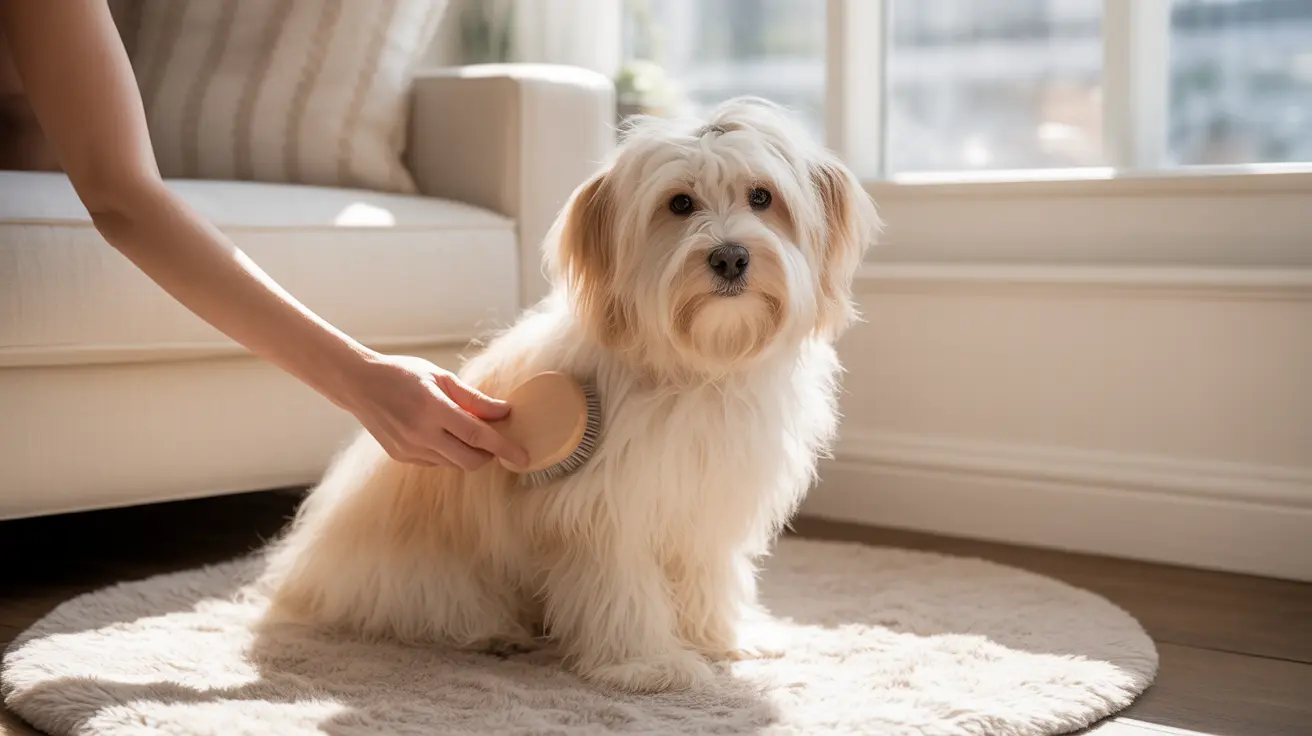If you're considering adding a Havanese to your family, you might be wondering about their shedding habits. Known for their silky, long coats, Havanese dogs are often praised for being low-shedding and hypoallergenic. Let's explore everything you need to know about Havanese shedding and how to maintain their beautiful coat.
Understanding Havanese Shedding Patterns
Havanese dogs do shed, but their shedding is minimal compared to many other breeds. Unlike double-coated dogs that "blow" their coats seasonally, Havanese have a single-layer coat that sheds gradually throughout the year. This means you won't find clumps of fur around your home or deal with heavy seasonal shedding.
The unique structure of their coat contributes to their low-shedding nature. Their hair grows continuously, similar to human hair, and when individual hairs fall out, they often get caught in the surrounding coat rather than falling onto furniture or floors.
Factors That Influence Shedding
Health and Nutrition
A Havanese's shedding can be affected by their overall health and diet. A balanced diet rich in omega-3 fatty acids, biotin, and essential nutrients helps maintain a healthy coat and minimize shedding. Poor nutrition, stress, or underlying health issues can lead to increased hair loss.
Environmental Factors
While Havanese typically maintain consistent shedding patterns year-round, environmental factors can influence their coat health. Changes in temperature, humidity, and seasonal transitions may cause slightly increased shedding, though it remains notably less than most other breeds.
Essential Grooming Practices
Daily Maintenance
Regular grooming is crucial for managing a Havanese's coat and controlling loose hair. Daily brushing helps prevent matting and removes any shed hair caught in the coat. Use a pin brush or soft-bristled brush, and pay special attention to areas prone to tangling, such as behind the ears and under the legs.
Bathing Schedule
Bathe your Havanese every 2-3 weeks using a high-quality dog shampoo. Regular bathing helps maintain coat health and reduces the amount of loose hair in your home. Always brush thoroughly before bathing to prevent mats from tightening during the washing process.
Signs of Abnormal Shedding
While Havanese are low-shedding dogs, excessive hair loss can indicate health problems. Watch for these warning signs:
- Bald patches or thinning areas
- Sudden increase in shedding
- Dry, brittle fur
- Skin irritation or redness
- Excessive scratching or itching
If you notice any of these symptoms, consult your veterinarian promptly.
Frequently Asked Questions
Do Havanese dogs shed a lot, and how does their shedding compare to other breeds?
Havanese dogs are considered low-shedding breeds. Unlike heavy shedders like German Shepherds or Huskies, Havanese lose very little hair, and what they do shed usually gets caught in their coat rather than spreading around your home.
How often should I groom and brush my Havanese to manage shedding and prevent mats?
Daily brushing is recommended for Havanese dogs. Spend 10-15 minutes each day brushing their coat to prevent matting and remove loose hair. Professional grooming every 6-8 weeks can help maintain coat health.
Does the Havanese shed more during certain seasons, and what should I expect?
While Havanese may experience slightly increased shedding during seasonal changes in spring and fall, the difference is minimal compared to double-coated breeds. Their shedding remains relatively consistent throughout the year.
What health issues can cause abnormal shedding in Havanese, and when should I see a vet?
Abnormal shedding can be caused by allergies, hormonal imbalances, skin infections, or nutritional deficiencies. Consult a vet if you notice sudden increased shedding, bald patches, or skin irritation.
How can diet, environment, and grooming routines affect the amount my Havanese sheds?
A balanced diet rich in essential nutrients, regular grooming, and a stable indoor environment help minimize shedding. Poor nutrition, inadequate grooming, or extreme environmental changes can increase hair loss.
Conclusion
While Havanese dogs do shed, their minimal shedding makes them an excellent choice for those seeking a low-maintenance pet or those with mild pet allergies. With proper care, nutrition, and regular grooming, managing their coat and shedding is straightforward and manageable for most owners.






